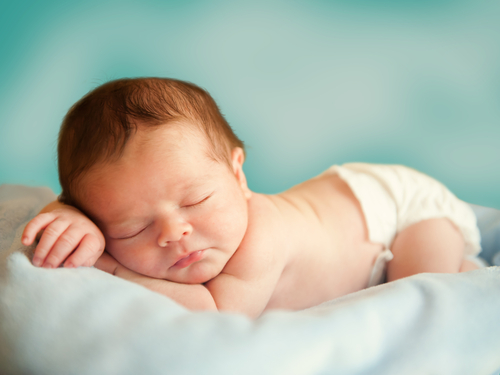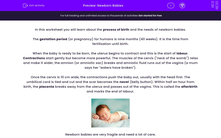In this activity, you will learn about the process of birth and the needs of newborn babies.
The gestation period (or pregnancy) for humans is nine months (40 weeks). It is the time from fertilisation until birth.
When the baby is ready to be born, the uterus begins to contract and this is the start of labour. Contractions start gently but become more powerful. The muscles of the cervix (neck of the womb) relax and make it wider, the amnion (or amniotic sac) breaks and amniotic fluid runs out of the vagina (a mum says her "waters have broken").
Once the cervix is 10 cm wide, the contractions push the baby out, usually with the head first. The umbilical cord is tied and cut and the scar becomes the navel (belly button). Within half an hour from birth, the placenta breaks away from the uterus and passes out of the vagina. This is called the afterbirth and marks the end of labour.

Newborn babies are very fragile and need a lot of care.
In the first few months, they need to be fed on milk. Mammary glands in the breasts produce milk. This milk contains nutrients to give the baby energy to grow. It also contains antibodies - these are substances that help to prevent diseases caused by microbes. This is why it is extremely important to breastfeed newborns for at least six months. After a few months, babies can eat semi-solid food.
Let's have a go at some questions now. Remember that you can come back to this page at any point by clicking on the red help button on the screen.








